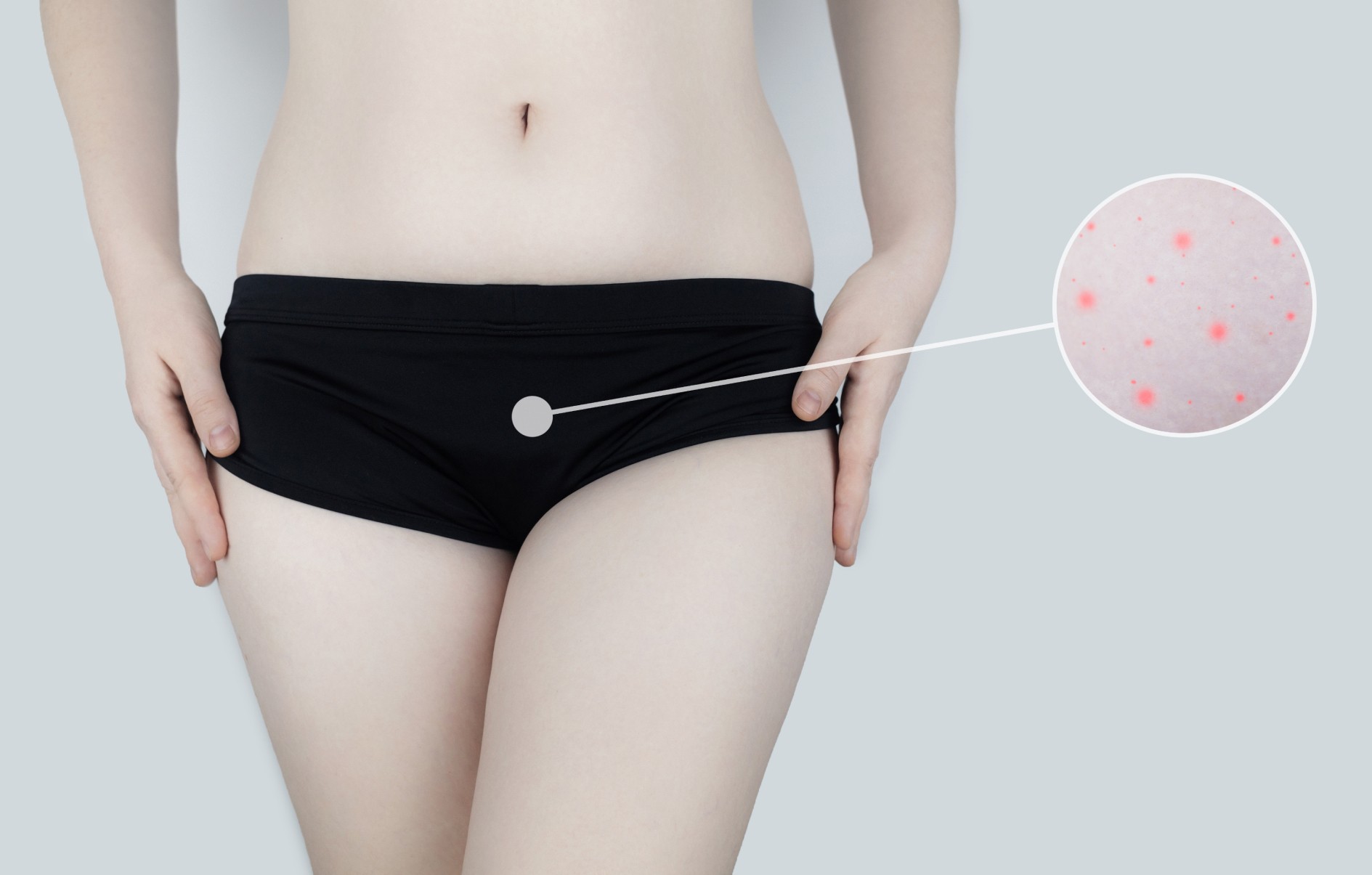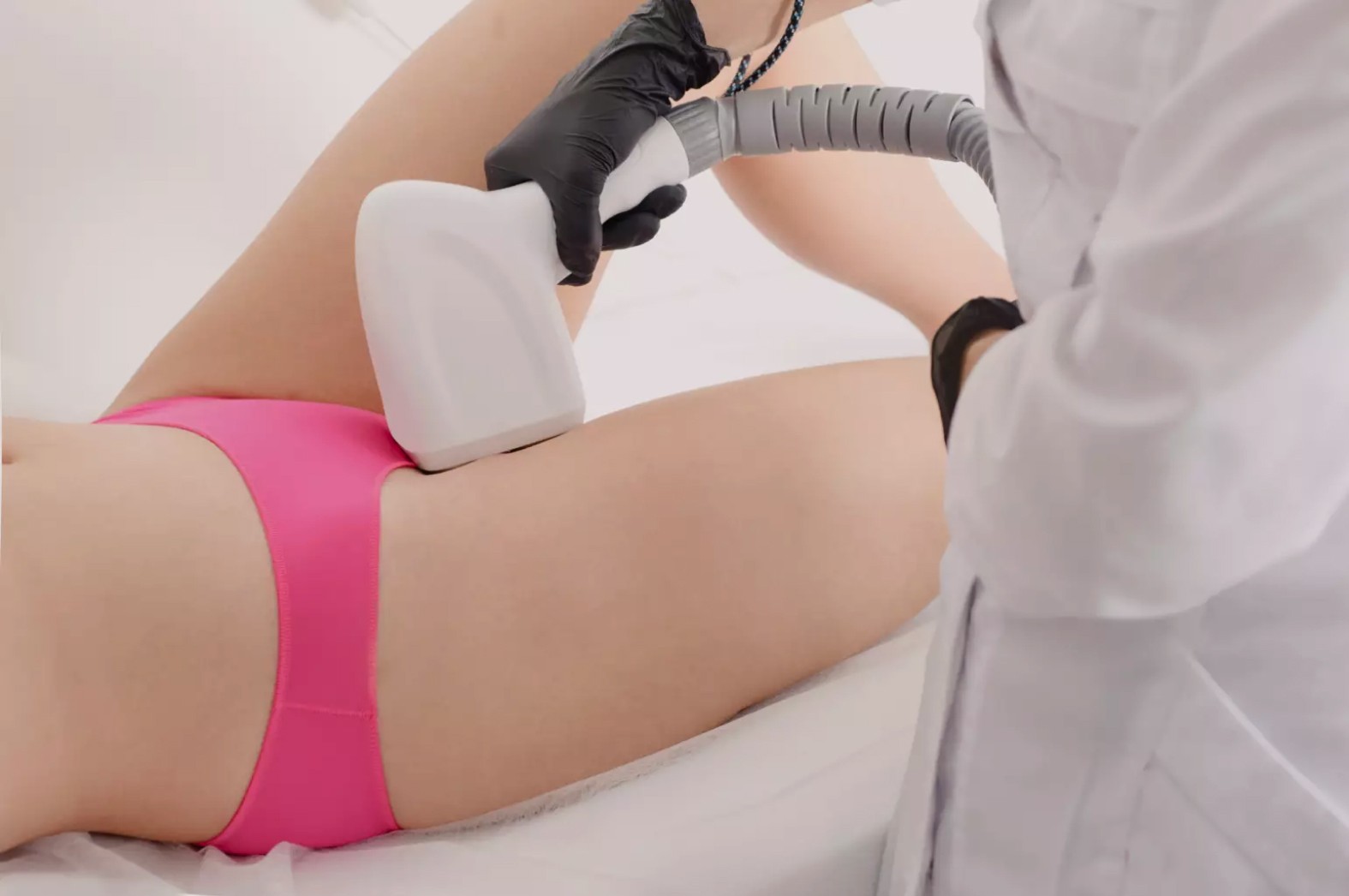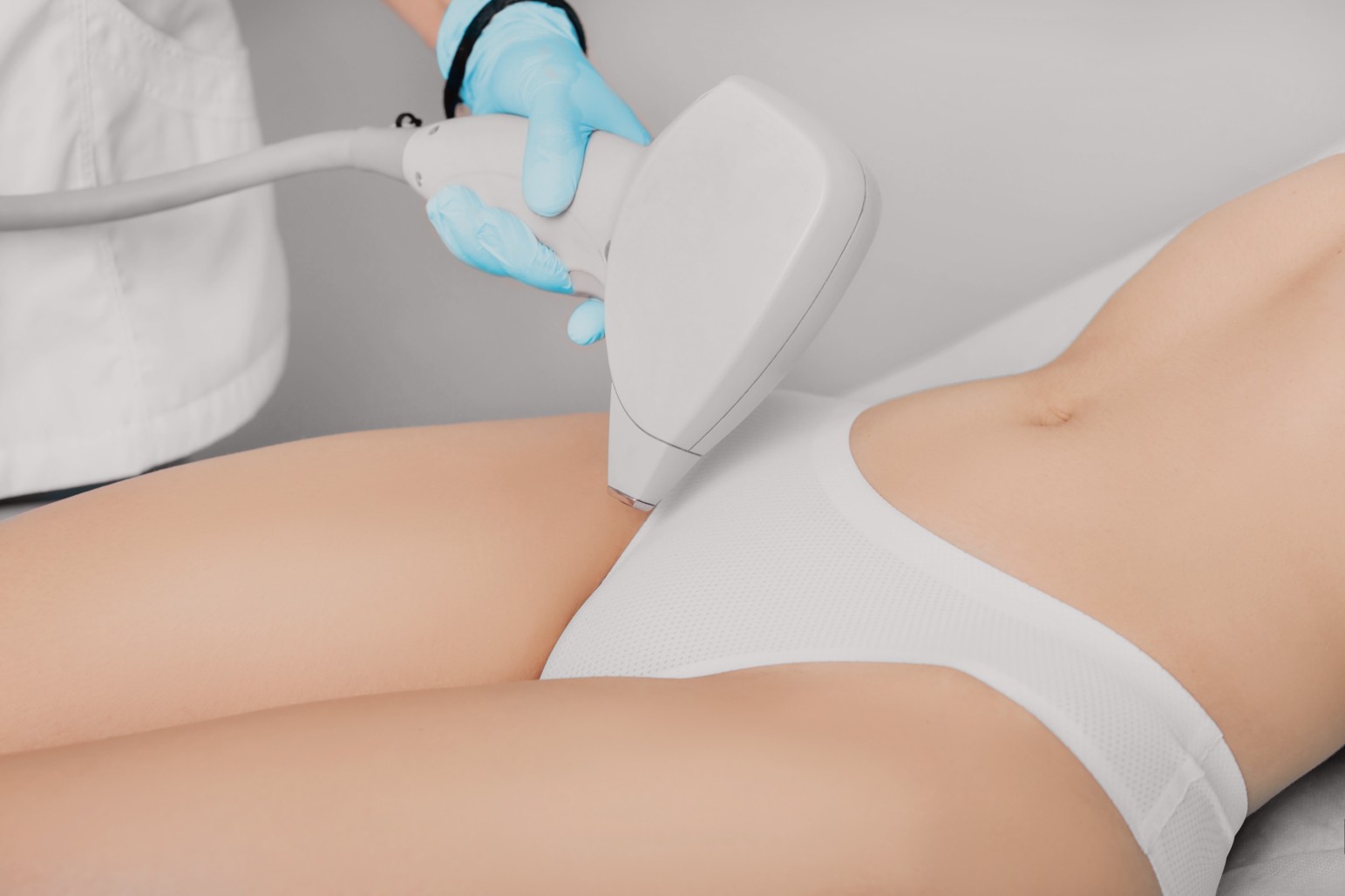When shaving the groin and intimate areas, one significant unpleasantness that can occur is ingrown hairs in the groin. What causes this uncomfortable phenomenon? And how can you ensure it doesn’t happen again? That’s exactly what we will explore in the following article.
Obsah
Do you want to be free from ingrown hairs once and for all? Then there is essentially only one option. Laser hair removal of the groin can destroy the hair, including the follicle, and thus prevent its further growth permanently. Come and undergo this procedure at our salon!
What are the main reasons for ingrown hairs in the groin?
Genetics
Our genetics largely determine how we look and partially influence how we behave. Our parents pass down hair and eye color, but also the way our hair grows.
Genetic factors dictate characteristics such as hair density, structure, and growth patterns. Some people have a genetic predisposition to thicker, curlier hair, which is more prone to ingrowth in intimate areas.
Genetics also affects hair growth patterns. In some cases, hair may curl and grow in a direction that encourages ingrowth.
Additionally, skin type can play a role in whether hair will ingrow. For example, skin types that are genetically predisposed to higher oil production may have a greater risk of ingrown hairs. Narrow hair follicles can also cause hair to grow back into the skin.
Genetics can also influence the body’s hormonal balance, which affects hair growth. Hormonal changes can manifest in factors such as hair density, texture, and growth patterns.

Inappropriate clothing
With the advent of synthetic fibers and mass clothing production, the problem of ingrown hairs has become more pressing than ever. The trend of tight-fitting clothing has not helped either. How do ingrown hairs relate to these phenomena?
Tight clothing constantly rubs against the skin, which can lead to irritation. Moreover, constricting clothing and underwear prevent hair from growing out naturally, causing it to start growing back into the skin instead.
Synthetic fabrics or tight clothing that don’t allow the skin to breathe often trap moisture and sweat. This humid environment is a breeding ground for bacteria and can exacerbate skin irritation, logically increasing the likelihood of ingrown hairs.
Additionally, if you wear excessively tight clothing after shaving, depilating, or epilating, you increase the risk of skin irritation and, consequently, the risk of ingrown hairs.
In light of the above, we recommend wearing loose, breathable clothing, especially after shaving or other hair removal methods. It’s also ideal to opt for clothing made from natural materials, such as cotton, which helps keep the skin dry and healthy.
Poor shaving technique
The most common cause of ingrown hairs is undoubtedly traditional shaving when done improperly. A bad shaving technique leads to irritation and hair growing in the wrong direction. If you then cover the poorly shaved skin with tight clothing, you create a perfect storm for problems.
To avoid such issues, people often turn to other hair removal methods like waxing, sugaring, or chemical depilatory creams. Waxing is painful and not very suitable for intimate areas, especially if done at home.
Sugaring is only slightly gentler, and depilatory creams are also not recommended for sensitive intimate areas. Thus, the most effective method remains laser hair removal.
Inflammation and infections
This issue is often closely related to improper shaving and hair removal methods, as well as tight clothing.
Shaving, waxing, or other harsh hair removal techniques can cause irritation, small injuries, and inflammation of hair follicles, especially if bacteria enter these areas.
The risk is higher the lower the quality of your shaving tools.
However, infections or inflammation can have other causes as well. A crucial preventive measure in all cases is to adhere to proper intimate hygiene practices.
Inflammation that arises in this way makes it difficult for hairs to grow out of the skin, leading to ingrown hairs.
Repeated inflammation and infections can also often result in scar tissue or keloids around hair follicles. These scars then physically block the path of hairs growing out of the skin, causing them to become ingrown. Inflammation can also alter the structure of the hair itself, making it weaker and more prone to bending.
How to best avoid ingrown hairs in the bikini area
Don't underestimate the preparation
Proper preparation and the right skincare routine are essential for preventing ingrown hairs.
Before shaving or waxing the bikini area, it’s important to thoroughly cleanse the skin.
Use a gentle cleanser for intimate hygiene (preferably fragrance-free and alcohol-free) that doesn’t dry out the skin, along with warm water to help open the pores and make hair removal easier.
Gentle exfoliation of the skin is key to removing dead skin cells and preventing ingrown hairs. Use a mild scrub and exfoliate the bikini area a day before hair removal. This helps to straighten the hairs, making them easier to remove.

Suitable methods of hair removal and their advantages and disadvantages
Shaving
Advantages:
Shaving is quick and easy (although it still requires proper technique). You can do it at home, and apart from a razor or electric shaver, you don't need any special equipment—although we do recommend getting a good-quality shaving gel.
Disadvantages:
The downside of shaving, compared to other methods, is the high risk of skin irritation, ingrown hairs, and cuts. Additionally, previously shaved hairs may sometimes grow back even thicker. No matter how perfect your shave is, the results will never last more than a few days.
Wax Epilation
Advantages:
It provides longer-lasting results than shaving. With repeated epilation, hairs can become so weakened that they will grow back finer and less dense over time.
Disadvantages:
It can be painful, especially in the sensitive bikini area. Additionally, you won't entirely avoid the risk of irritation, redness, and ingrown hairs.
Laser hair removal: how to permanently deal with ingrown hairs in the groin
Advantages:
Laser hair removal provides the longest-lasting, and in some cases even permanent, hair removal. It is effective on most hair and skin types.
Disadvantages:
It requires a larger financial investment and several visits to a specialist. It's also important to carefully choose the salon where you will undergo the treatment. A poor-quality laser in the hands of an inexperienced specialist can be disastrous for your skin.
What products will reduce the risk of complications and ingrown hairs after shaving and waxing?
After waxing, it is important to moisturise the skin. To do this, choose products with moisturising and soothing ingredients such as aloe vera or shea butter to help restore and soothe the skin.
Special creams and solutions against ingrown hairs can also be useful. Look for products containing salicylic or glycolic acid, which help keep pores open and prevent ingrown hairs.
Use soothing solutions or gels after waxing or sugaring. These products often contain ingredients such as hyaluronic acid or chamomile extracts to help reduce redness and soothe the skin.

More tips for post-depilation care
As mentioned earlier, after depilation, avoid wearing tight clothing that can irritate the skin and contribute to ingrown hairs.
It’s also important to regularly perform gentle exfoliation in the groin area to prevent ingrown hairs. This should be done several times a week using a mild exfoliating product.
After depilation, it’s advisable to avoid excessive sweating or physical activity that could irritate the skin.
Don’t hesitate to consult a dermatologist or skincare specialist if you are long-term troubled by ingrown hairs. Every skin type is unique, and the advice provided here is general. Therefore, it’s beneficial to get the opinion of an expert who can recommend more specific procedures and products to alleviate your issues.
What is the most effective treatment for ingrown hairs in the groin? Laser hair removal
Although there is nothing fundamentally wrong with shaving and various depilation methods, their downside is the need for continuous repetition if you want to keep your skin smooth. However, with constant repetition, the risk of irritation and the potential for ingrown hairs also increases.
No other method currently offers the ability to eliminate hair as effectively and, importantly, for as long a duration as permanent laser hair removal.
During this procedure, the laser pulse comes into contact with the hair, converts to thermal energy, and burns the hair along with the follicle. A burned hair does not regenerate, or it may take several years to do so.
So, if you often struggle with ingrown hairs in the groin area, laser hair removal provides a permanent solution to this problem. Hairs will no longer grow, become ingrown, or push back into the skin—they simply won’t grow at all.
A commonly held myth about laser hair removal is that it cannot effectively deal with light hair or that it loses effectiveness on tanned or darker skin.
While there was some truth to this myth in the past, modern laser technologies have helped overcome this issue. If you are treated with a quality medical laser, there’s no need to worry about it not being effective on your hair, whether it’s light or dark.
Moreover, laser hair removal is a virtually painless and highly gentle method, suitable even for the depilation of intimate areas and other places with more sensitive skin.

And peace of mind from worrying about shaving, ingrown hairs and other inconveniences. No other procedure except laser hair removal can offer you this. Make an appointment.





